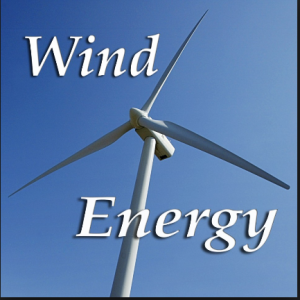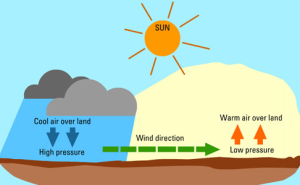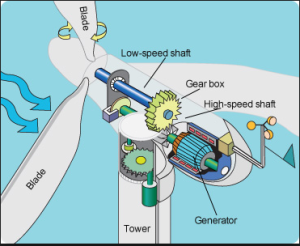How is wind formed?
Have you ever wondered how does wind work to produce electricity by harnessing the natural power of the wind? In this article I have explained the basic facts about wind as a source of energy to help you to understand how is wind formed and how does wind energy work using the movement of the air to generate electricity.
Millions of people today perceive wind power as a better way to generate electricity for powering our homes and businesses to lower our dependence on fossil fuels. This is mainly due to the fact that wind as a source of energy is a viable alternative to the fossil fuels, which are the origin of greenhouse gasses that cause global warming and harm our health and threaten the environment. This is also one of the most abundant and increasingly cost-competitive energy resources to provide a cushion against electricity price increases.
US wind power has more than tripled over the past decade and today it is the largest source of renewable electricity in the country. In the U.S. 8% of energy generating capacity comes from wind turbines. According to the American Wind Energy Association, there are more than 50,000 wind turbines across the country that provide a capacity of around 96 GW, which is enough to power more than 15 million American homes in a year. According to the Department of Energy, because of many advantages of wind energy, by 2050, the wind capacity will increase to more than 400 GW creating significant economic and environmental benefits along the way.
Let’s now explain the basic facts about wind energy to understand how does wind work as an energy source.
How is wind formed and how does wind blow?
Let’s first explain how is wind formed and what causes wind to blow.
Wind results from the movement of air due to atmospheric pressure gradients. Solar radiation heats every part of the surface of the earth unevenly because of different formations of the earth’s surface, including land and water and rotation of the earth. As a result of this uneven heating the air above the Earth surface also heats and cools at different rates. As the air density is inversely proportional to temperature this uneven heating creates atmospheric pressure zones. The hot air which is less dense rises through cold air, reducing the atmospheric pressure near the Earth’s surface which draws in cooler air from high pressure areas to fill the void. This explains how does wind blow due to movement of air from high pressure to low pressure area. The larger the atmospheric pressure gradient, the higher the wind speed and thus, the greater the wind power which can be captured by means of wind energy-converting machinery.
Among all factors affecting the wind generation the uneven solar radiation on the earth’s surface is the most important and critical one.
How does wind energy work?
Wind energy is a form of energy produced through wind turbines that use the movement of air as the power source, which is called ‘wind power’. Now, how does wind energy work to generate this mechanical power to run the wind turbines?
The movement of the air which causes wind to blow produces kinetic energy in the wind which can be used to produce useful energy. The kinetic energy of a moving body is proportional to its mass or weight and hence this energy in the wind depends on the density of the air, i.e. its mass per unit of volume. In other words, the ‘heavier’ the air, the more power is produced. Thus when the wind blows, the kinetic energy from movement of the wind produces mechanical power which turns the turbine blades around an electromagnetic generator that is connected to the main shaft which in turn converts the wind power into electrical energy.
As the movement of air is caused by heating of the Earth’s surface by solar radiation as explained above, wind is basically a form of solar energy. Approximately 2% of the heat radiated from the sun and reaching the earth surface is converted into wind energy.
How does wind work to produce electricity
The kinetic energy in the wind as explained above, is harnessed by building a Wind Turbine on the top of a tall tower to generate electricity. Now, how does wind work to operate a Wind turbine?
The Wind turbine operates on a simple principle. The energy in the wind turns two or three propeller-like blades around a rotor (as shown in the picture). The rotor is connected to the main shaft of the turbine. When the wind blows on the angled blades of the rotor, it causes the rotor to spin. Since the rotor shaft is connected to a generator through a gearbox, when the rotor spins, so does the generator and the generator uses an electromagnetic field to convert the wind’s kinetic energy into electrical energy. From the above explanation of how does wind work to rotate a turbine it is evident that the speed of wind plays a significant role to maximize power production which in turn reduces generation cost.
Wind turbines operate over a limited range of wind speeds. If the wind is too slow the Wind Turbine fails to rotate, on the other hand if it is too fast, the turbine will automatically shutdown itself to avoid being damaged. An average wind speed of 14 to 15 miles per hour is typically needed to economically generate power from wind energy. The power output from a wind turbine rises as cube function of the wind speed. In other words, if wind speed doubles, the power output increases eight times. Therefore, higher-speed winds are more easily and cheaply captured.
Wind power technology
From the description of how does wind energy work it is apparent that wind turbine which converts the wind power into electrical energy, can be used both as stand-alone applications and as a bigger source of energy connected to a utility power grid.
Stand-alone wind turbines are typically used for water pumping or communications. However, homeowners, farmers, and ranchers in windy areas can also use wind turbines as a way to cut their electricity bills. But there are times when the wind turbine is not producing electricity (i.e. when the wind is not blowing) and you require backup system to supply power. During such times most of these stand-alone systems provide power through batteries and/or a diesel generator.
To operate as a bigger source of energy, a number of wind turbines are built close together to establish a wind plant. Several electricity suppliers today use such wind plants to supply power to their consumers. A grid-connected wind plant can help to reduce consumption of costly utility-supplied electricity for lighting, appliances, and electric heat. If the wind system cannot deliver the required amount of energy, the utility makes up for the shortage. When the wind system produces more electricity than requirement, the excess energy can be sold to the utility through the available interconnections where switching takes place automatically.
Wind energy resources
Wind energy can be produced anywhere in the world where there is wind current with consistent force. Wind is usually measured by its speed and direction. How fast, how often, and when wind blows — play a significant role in wind power generation cost. These resources are compiled from wind-related recorded data by the local meteorological station. The wind statistics collected from the local meteorological station, therefore, give an idea about the best sites to locate wind farms according to the best wind resources.
Before I conclude let me also address some of the related queries often made by the people.
What is wind and how does it work?
Air in motion is called Wind. As explained in the post wind is produced by the uneven heating of the surface of the earth by solar radiation. As a result of this uneven heating the air above the Earth surface also heats and cools at different rates. This uneven heating creates atmospheric pressure zones which causes movement of air from high pressure to low pressure area. This explains how does wind blow.
How does air turn into wind?
Wind is the movement of air molecules. The atmospheric pressure gradient due to uneven heating of the Earth surface causes air molecules to move from the relatively high air pressure area to the area of low pressure turning air into wind.
What affects wind speed?
At the Earth’s surface, wind blows horizontally from high pressure to low pressure areas created by uneven heating of the surface. The speed of wind is determined by the pressure gradient between the two areas. The larger the gradient the higher the wind speed.
You may also like to read this related post: What are the wind energy advantages and disadvantages
Conclusion
On going through the post about how is wind formed and how does wind work it would be evident that wind as a source of energy is practically inexhaustible and is the most cost competitive energy option in the market as no fuels need to be mined and transported for wind power generation. Although power generation through wind turbine has high upfront construction costs but once the turbine is erected operational costs are nearly zero. To encourage wind-energy development many governments are also offering tax incentives making it a a clean and cost-competitive energy resource of the future.
Days are not far off when polluting non-renewable energy sources shall become comparatively too expensive and gradually lose out to wind power in competition in the electricity market. By 2030, it is estimated that the average total cost of electricity using onshore wind should be about $75 per MWh as against $95 per MWh from conventional coal.
You may also like to read the related post: Wind Turbine parts – functions of major parts of a Wind Turbine


